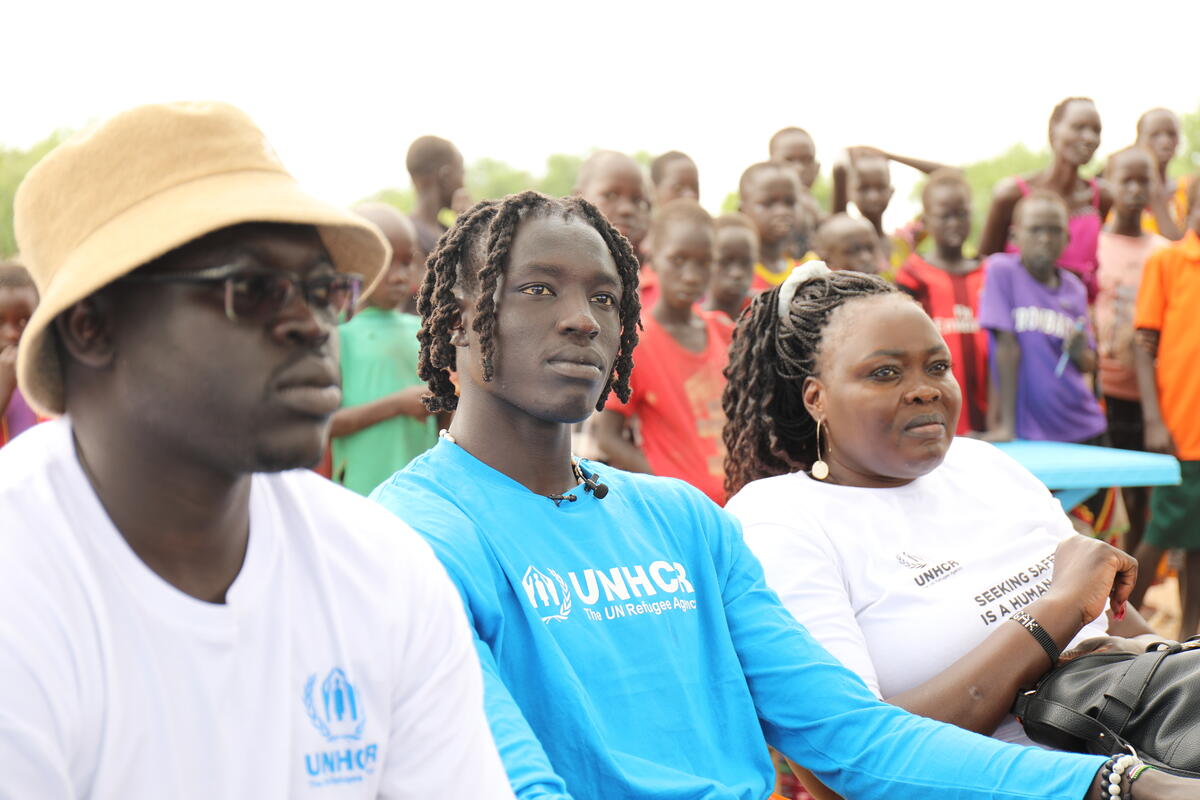UNHCR trucks 28 tonnes of aid to displaced people in Somalia
UNHCR trucks 28 tonnes of aid to displaced people in Somalia

NAIROBI, Kenya, April 13 (UNHCR) - The UN refugee agency, in collaboration with its local partners in Somalia, has begun trucking more than 28 tonnes of much-needed relief supplies for distribution to up to 20,000 internally displaced people outside the capital Mogadishu.
The supplies were flown from Baidoa, 230 kilometres north-west of Mogadishu, earlier this week from UNHCR's emergency stockpiles in Dubai. Trucks carrying the aid left Baidoa on Thursday and were heading south towards the district of Afgooye, where there are almost 40,000 displaced Somalis who fled recent fighting in the Somali capital. Afgooye is 30 km west of Mogadishu in Shabelle Hoose (Lower Shabelle) province.
The airlifted supplies consist of 9,000 blankets, 1,800 plastic sheets, 3,600 jerry cans and 1,800 kitchen sets which will be distributed to displaced families in Afgooye by UNHCR local staff and local partners. Thousands of displaced Somalis have spent weeks without proper food, water or shelter.
Families with no relatives or clan links in the area continue to live in the open, or under trees. The need for shelter material is now more pressing because of the rainy season. "Families living directly by the road express anguish because they know that heavy rains usually begin this month. They are very worried for their children," said one of UNHCR's local partners in Somalia.
UNHCR has additional stocks for up to 5,000 families in Mogadishu and smaller quantities in Marka. However, the refugee agency is facing difficulties in bringing items out of the warehouses for distribution to those who fled from the capital to the adjacent Lower Shabelle and Shabelle Dhexe (Middle Shabelle) provinces. Insecurity in parts of Mogadishu has continued to jeopardise humanitarian access to the Somali capital and surrounding regions, making the plight of civilians all the more desperate.
Some 213,000 Somalis are believed to have fled from Mogadishu since the beginning of February, according to the latest figures collated by UNHCR from information supplied by non-governmental organisations in Somalia.
Earlier estimates had put the figure at 128,000 but the updated number includes fresh arrivals and data from Galgaduud province, some 240 km north-east of Mogadishu. An international organisation on the ground said there were an estimated 65,000 displaced people in the Galgaduud region.
Nearly 100,000 of the internally displaced people (IDPs) have sought safety in Middle and Lower Shabelle, including the 40,000 in Afgooye district. As the area has grown increasingly crowded, new arrivals are now compelled to move further north, notably towards the towns of Baidoa and Balcad.
It is estimated that up to 14,000 people may be recently displaced in Baidoa, among them some 1,200 from Mogadishu who have moved on since April 5 from Afgooye. Many of the newly displaced people in Baidoa are said to be originally from the Bay region and were living as IDPs in Mogadishu. Another 2,700 people have moved out of Afgooye towards Balcad since April 5.
These figures, compiled by UNHCR from information provided by a monitoring network of local NGOs in Somalia, may still rise as people continue to flee Mogadishu, where a truce had been holding for about 10 days despite sporadic gunfire. Clashes resumed Wednesday between the Ethiopian-backed Transitional Federal Government forces and the insurgents.
Meanwhile, there are reports that small numbers of people are making their way to Doble, a small Somali town adjacent to the border with Kenya. On Tuesday, 11 minibuses ferried more than 200 people from Mogadishu to the border town. There are reports from NGOs with access to Doble that there is a daily trickle of people from Mogadishu to the town, which is hosting between 2,000-3,000 freshly displaced people.
The health situation remains a concern following an outbreak of diarrhoea last week that is reportedly worsening. Seven new cases were this week admitted to an isolation camp set up by the community. Three of the cases, involving children under the age of five, are said to be severe. For security reasons, the United Nations does not have access to Doble and is unable to verify these reports.
By Catherine Weibel in Nairobi, Kenya









